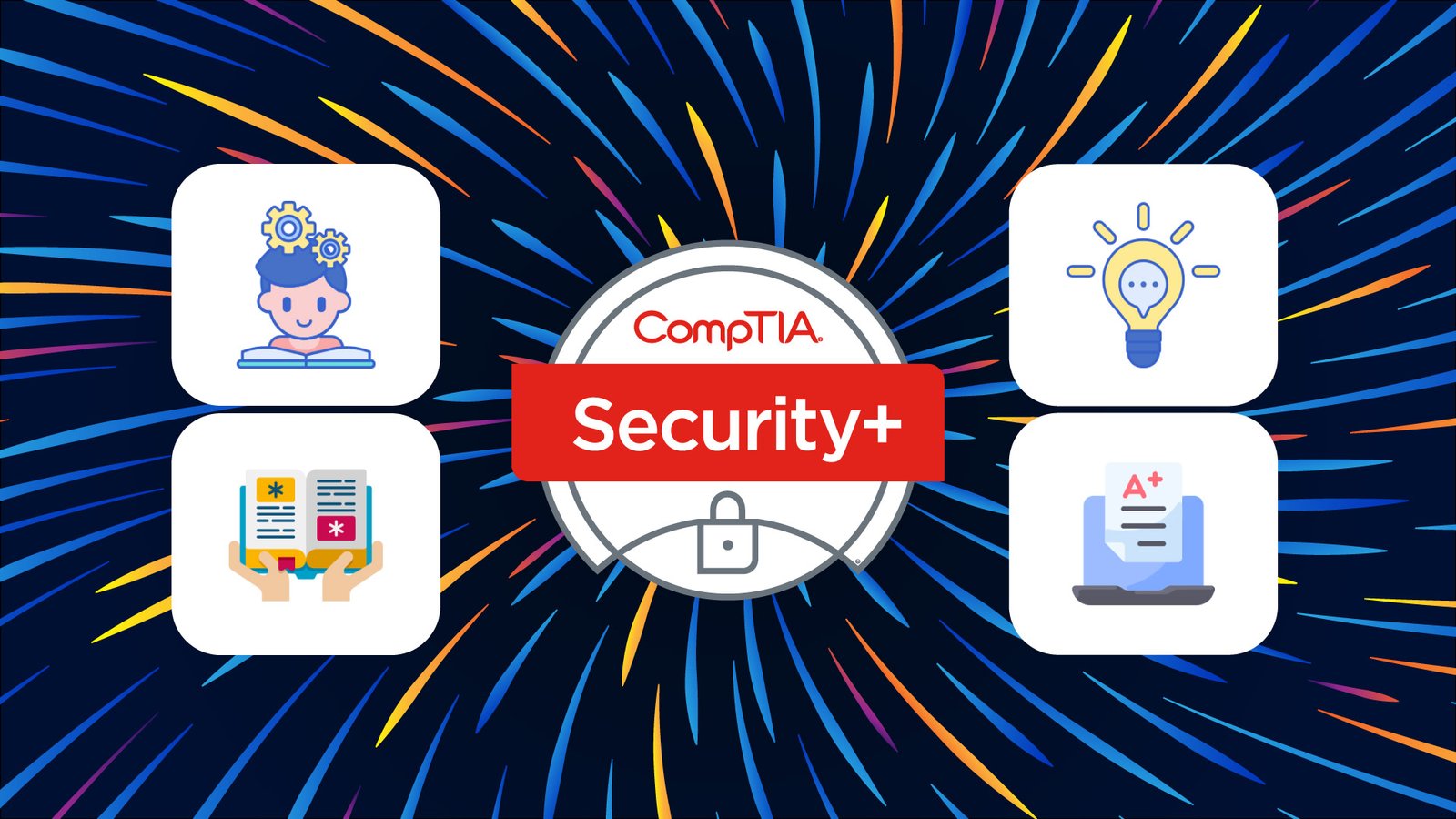The CompTIA Security+ certification is one of the most sought-after credentials in the IT industry, validating foundational cybersecurity knowledge and skills. To help you prepare effectively, we’ve compiled a detailed brain dump covering the key topics, concepts, and best practices you’ll need to master for the exam. This guide is organized by exam domains to ensure comprehensive coverage.
1. Security Fundamentals
Understanding the CIA Triad
- Confidentiality: Ensuring data is accessible only to authorized users.
- Integrity: Maintaining the accuracy and trustworthiness of data.
- Availability: Ensuring systems and data are accessible when needed.
Risk Management
- Risk Identification: Understanding potential threats.
- Risk Mitigation: Using controls to reduce vulnerabilities.
- Risk Acceptance: Acknowledging and managing residual risks.
- Risk Transfer: Outsourcing risk management (e.g., insurance).
Security Controls
- Administrative Controls: Policies, training, and procedures.
- Technical Controls: Firewalls, encryption, intrusion detection systems (IDS).
- Physical Controls: Locks, surveillance cameras, and guards.
Principle of Least Privilege
- Granting users the minimum access necessary to perform their job functions.
2. Threats, Attacks, and Vulnerabilities
Common Threats
- Malware: Viruses, worms, Trojans, ransomware, spyware, and rootkits.
- Phishing: Techniques like spear phishing, vishing, and smishing.
- Denial-of-Service (DoS) and Distributed Denial-of-Service (DDoS): Overloading a system to make it unavailable.
- Insider Threats: Malicious actions by employees or contractors.
- Advanced Persistent Threats (APTs): Long-term, targeted attacks by sophisticated actors.
Vulnerabilities and Exploits
- Injection Attacks: SQL injection and command injection.
- Cross-Site Scripting (XSS): Injecting malicious scripts into web pages.
- Buffer Overflow: Exploiting memory handling to execute arbitrary code.
- Privilege Escalation: Gaining unauthorized higher-level access.
Scanning and Assessment
- Vulnerability Scanning:
- Active vs. Passive Scanning.
- Credentialed vs. Non-credentialed Scanning.
- Penetration Testing: Simulating attacks to test security.
3. Architecture and Design
Network Security Concepts
- Segmentation: Isolating sensitive data via VLANs or firewalls.
- Zero Trust Architecture: Never trust, always verify.
- Defense in Depth: Multiple layers of security controls.
Secure System Design
- Secure Boot: Ensures only trusted software loads during startup.
- Trusted Platform Module (TPM): Hardware-based security features.
- Sandboxing: Isolating applications for testing or containment.
4. Identity and Access Management (IAM)
Authentication
- Single-Factor Authentication (SFA): One form of verification.
- Multi-Factor Authentication (MFA): Combining two or more factors (e.g., something you know, have, or are).
- Biometric Authentication: Fingerprints, retina scans, or facial recognition.
Authorization and Accounting
- Role-Based Access Control (RBAC): Access based on job roles.
- Mandatory Access Control (MAC): Access based on predefined rules.
- Auditing and Monitoring: Tracking user activities.
5. Cryptography and PKI
Encryption Basics
- Symmetric Encryption: Same key for encryption and decryption.
- Asymmetric Encryption: Public and private key pair.
- Hashing: Ensuring data integrity (e.g., SHA-256).
Public Key Infrastructure (PKI)
- Certificates: Digital validation of identity.
- Certificate Authority (CA): Issues and manages certificates.
- Key Management: Storing and revoking keys securely.
6. Security Operations
Incident Response
- Preparation: Creating incident response plans.
- Identification: Detecting and reporting incidents.
- Containment: Limiting the impact of incidents.
- Eradication: Removing the threat.
- Recovery: Restoring systems to normal operations.
Security Monitoring
- SIEM: Security Information and Event Management tools for real-time monitoring.
- Log Analysis: Reviewing logs for anomalies.
7. Governance, Risk, and Compliance
Regulations and Frameworks
- GDPR: General Data Protection Regulation.
- HIPAA: Health Insurance Portability and Accountability Act.
- ISO/IEC 27001: International standard for information security management.
Security Policies
- Acceptable Use Policy (AUP): Guidelines for employee behavior.
- Data Classification Policy: Organizing data by sensitivity.
- Change Management Policy: Process for implementing changes.
Study Tips
- Use official study guides and resources from CompTIA.
- Take practice exams to identify areas needing improvement.
- Join online forums and study groups.
- Allocate dedicated time for hands-on labs and simulations.
By mastering these topics and applying practical experience, you’ll be well-prepared to pass the Security+ certification exam and advance your cybersecurity career. Good luck!


